World's Largest Active Volcano, world record in Hawaii
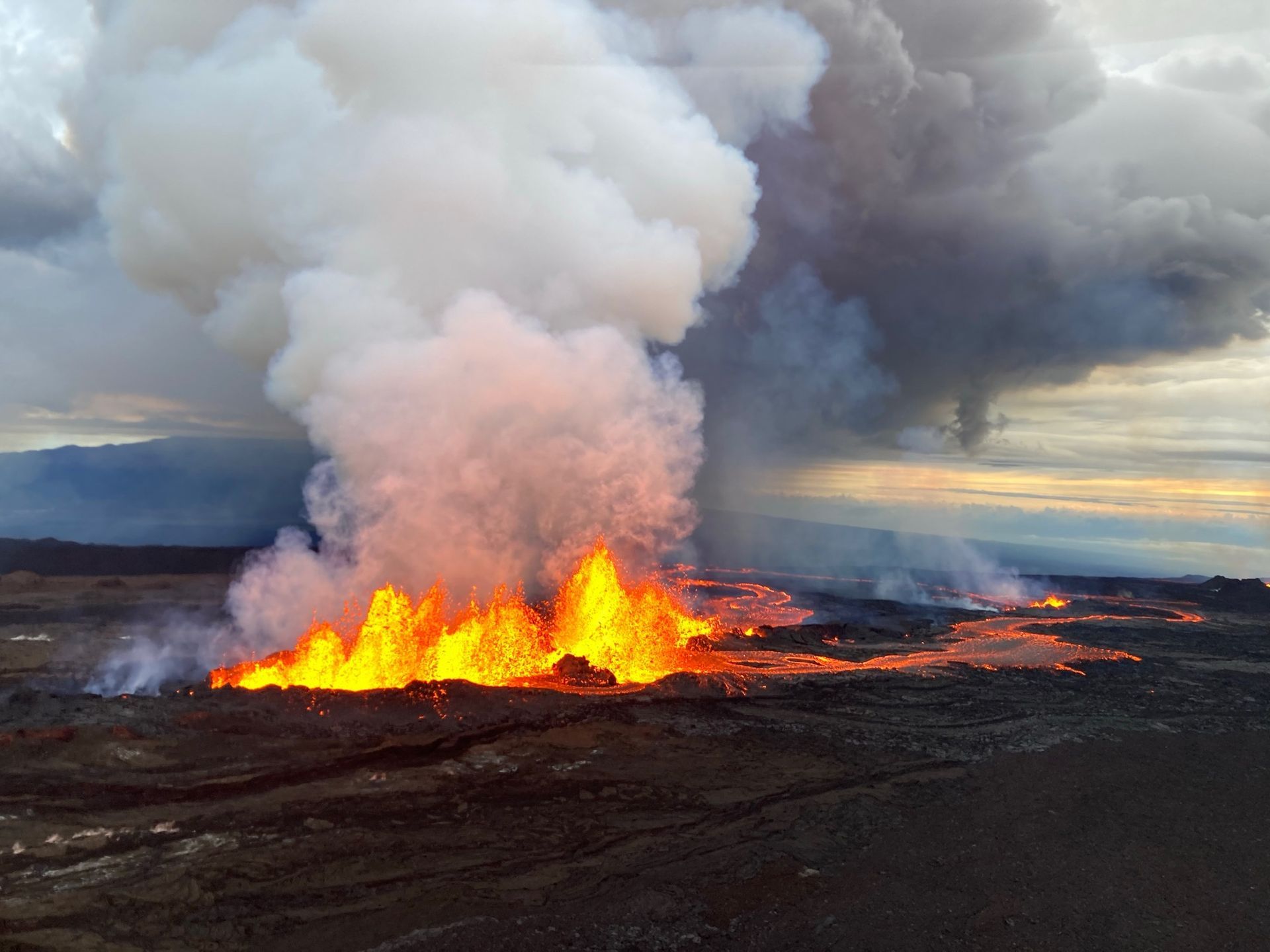
Hawaii, United States--Mauna Loa volcano, located on the south-central part of the island of Hawaii, Hawaii state, United States, makes up roughly 51% of Hawaiʻi Island and stands 13,681 feet (4,170 m) above sea level; more impressive, however, it rises an astonishing 30,000 feet (9,144 m) from the bottom of the sea, a greater height than Mount Everest; it has erupted 34 times since 1843— averaging once every five years, thus setting the world record for being the World's Largest Active Volcano, according to the WORLD RECORD ACADEMY.
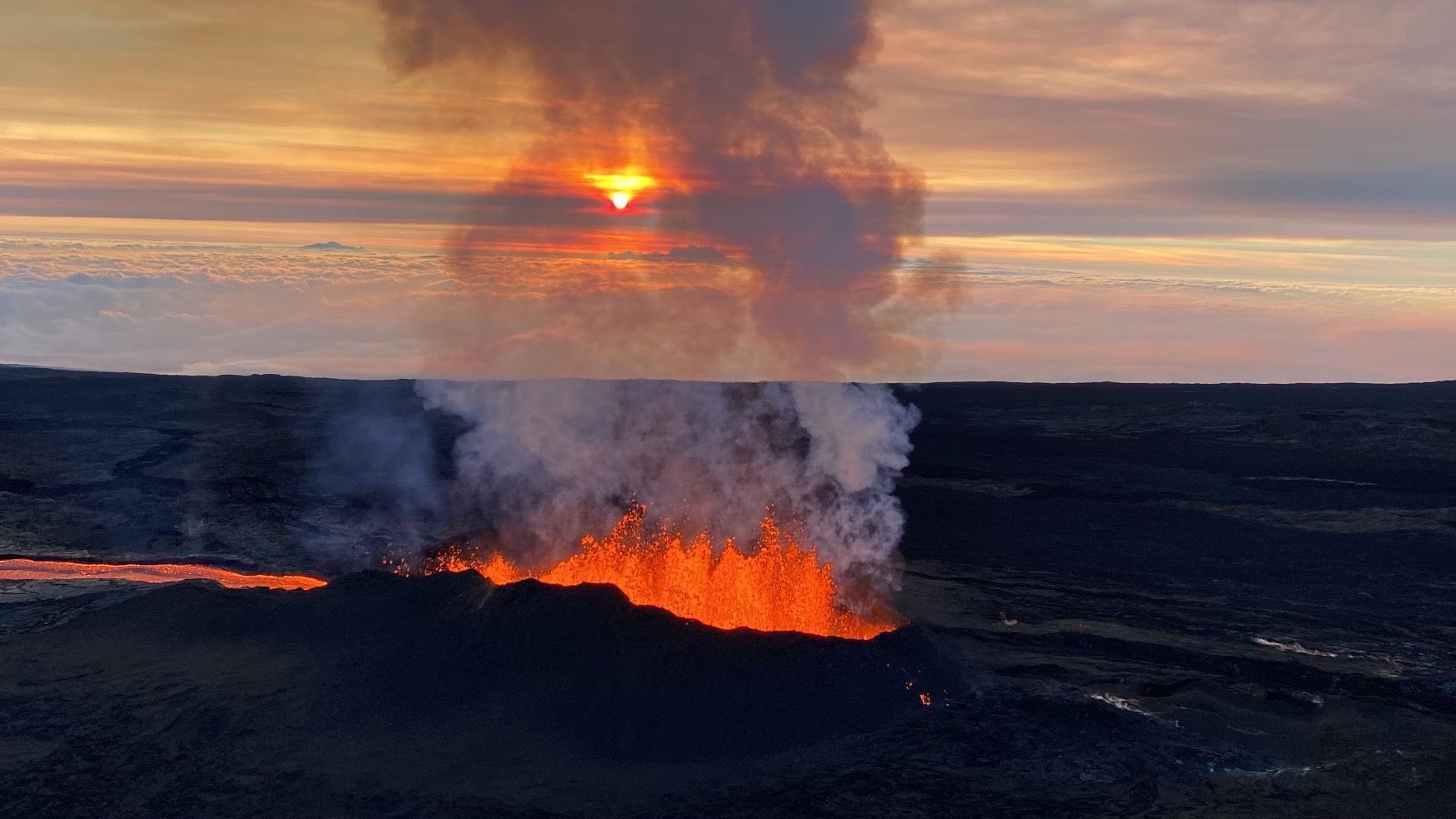
"Mauna Loa is one of five volcanoes that form the Island of Hawaii in the U.S. state of Hawaii in the Pacific Ocean. The largest subaerial volcano (as opposed to subaqueous volcanoes) in both mass and volume, Mauna Loa was historically considered to be the largest volcano on Earth until Tamu Massif was discovered to be larger. It is an active shield volcano with relatively gentle slopes, with a volume estimated at 18,000 cubic miles (75,000 km3), although its peak is about 125 feet (38 m) lower than that of its neighbor, Mauna Kea. Lava eruptions from Mauna Loa are silica-poor and very fluid, and tend to be non-explosive.
"Mauna Loa has likely been erupting for at least 700,000 years, and may have emerged above sea level about 400,000 years ago. The oldest-known dated rocks are not older than 200,000 years. The volcano's magma comes from the Hawaii hotspot, which has been responsible for the creation of the Hawaiian island chain over tens of millions of years. The slow drift of the Pacific Plate will eventually carry Mauna Loa away from the hotspot within 500,000 to one million years from now, at which point it will become extinct.
"Mauna Loa's most recent eruption began on November 27, 2022, and ended on December 13. It was the first eruption since 1984. No recent eruptions of the volcano have caused fatalities, but eruptions in 1926 and 1950 destroyed villages, and the city of Hilo is partly built on lava flows from the late 19th century." (Wikipedia)
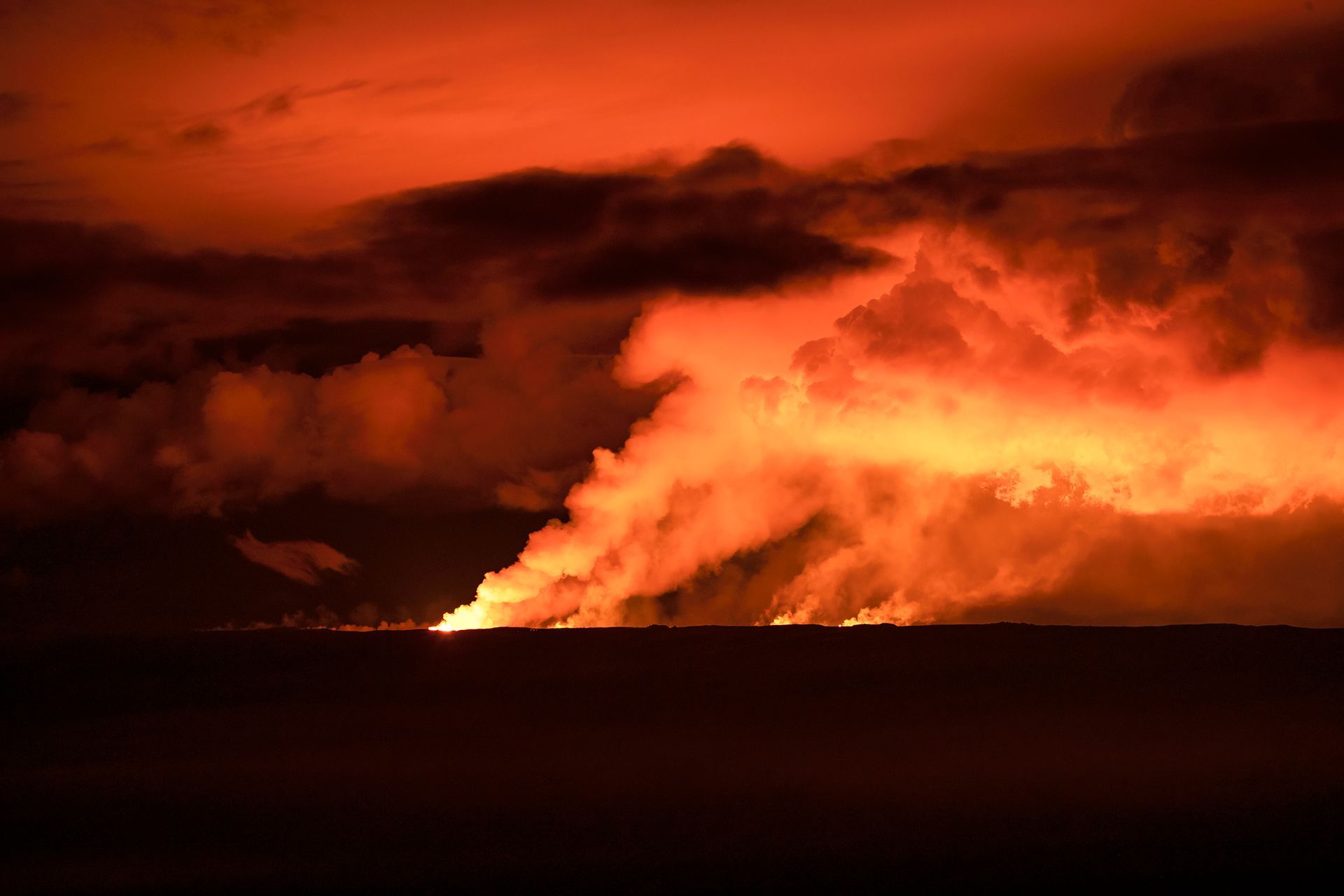
"The Hawaiian name "Mauna Loa" means "Long Mountain." This name is apt, for the subaerial part of Mauna Loa extends for about 120 km (74 mi) from the southern tip of the island to the summit caldera and then east-northeast to the coastline near Hilo," the
United States Geological Survey says.
"Mauna Loa is among Earth's most active volcanoes, having erupted 34 times since its first well-documented historical eruption in 1843. It has produced large, voluminous flows of basalt that have reached the ocean eight times since 1868. During the 1984 eruption, a lava flow came within 7.2 km (4.5 mi) of Hilo, the largest population center on the island.
"During the most recent eruption, in 2022, lava flows came to within 1.7 miles (2.8 kilometers) of the Daniel K. Inouye Highway (Saddle Road). Mauna Loa is certain to erupt again, and with such a propensity to produce large flows, we carefully monitor the volcano for signs of unrest."

"Mauna Loa is the largest active volcano on the planet. Meaning "long mountain" in Hawaiian, it is the quintessential shield volcano in its shape— signified by broad, rounded slopes. The volcano makes up roughly 51% of Hawaiʻi Island and stands 13,681 feet (4,170 m) above sea level. More impressive, however, it rises an astonishing 30,000 feet (9,144 m) from the bottom of the sea, a greater height than Mount Everest. The ocean floor actually bends under the weight of this mammoth mountain. By itself, the land mass that Mauna Loa encompasses is almost equal twice all of the other Hawaiian islands combined," the
National Park Service says.
"Eruptions of Mauna Loa have historically been characterized by high volume flows that produce lava capable of travelling long distances, contributing to its shape. Scientists believe that 90 percent of the volcano's surface has been covered with flows that erupted within the past 4,000 years.
"Mauna Loa has erupted 34 times since 1843— averaging once every five years. Over a longer period of time, the past 3,000 years, its estimated to have erupted once every six years."
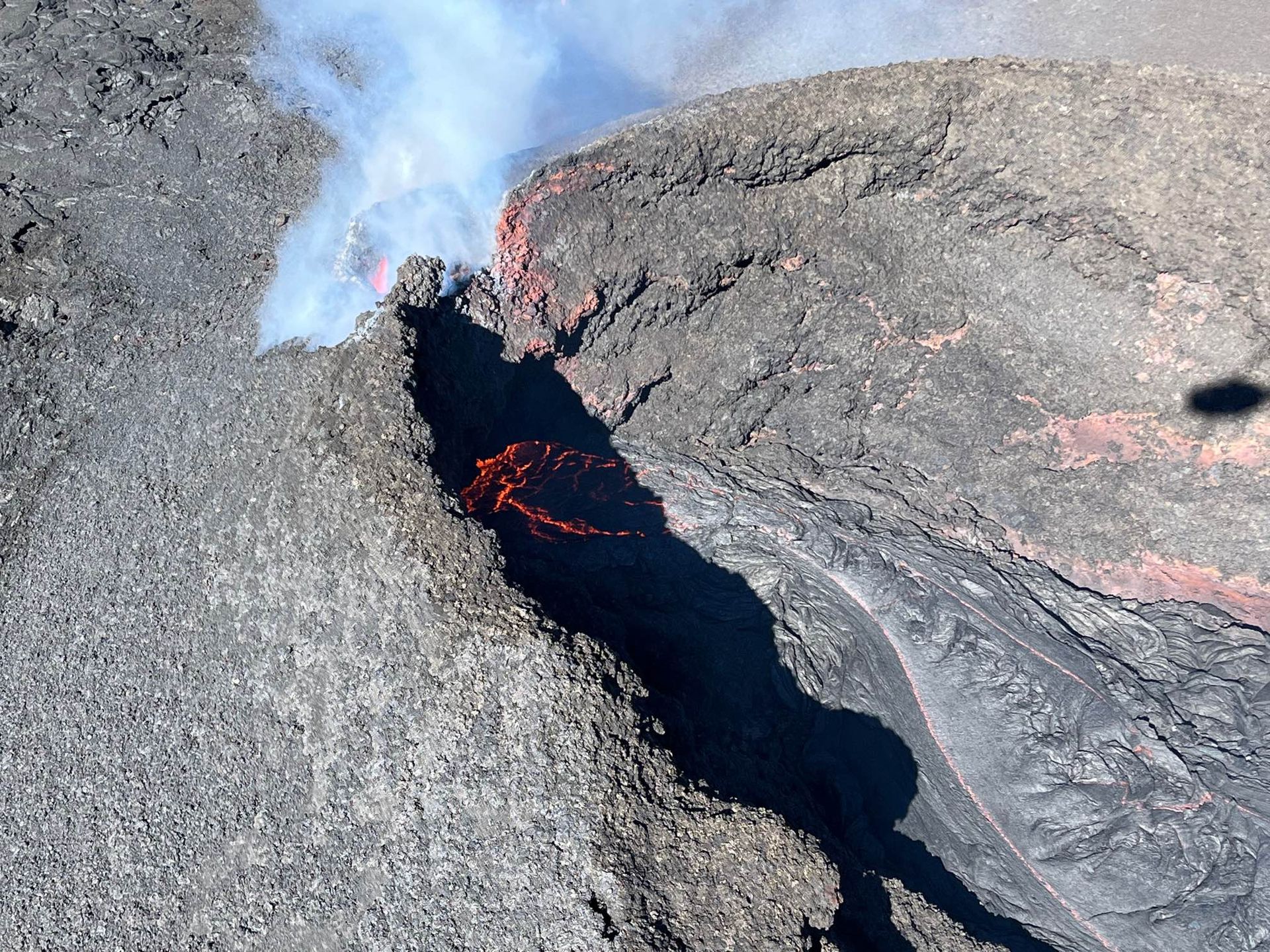
"Mauna Loa is a basaltic shield volcano that rises almost 9 km from the ocean floor in Hawaii. Flank eruptions typically occur from NE and SW rift zones, and from the Moku?aweoweo summit caldera. About 1,500 years ago a series of voluminous overflows from a summit lava lake covered about 25% of the volcano’s surface. An eruption during March-April 1984 produced lava flows and fountains (SEAN 09:03). A new eruption during 27 November-10 December 2022 was characterized by lava flows, fountains, and strong sulfur dioxide emissions, based on information from daily reports and volcanic activity notices from the US Geological Survey's (USGS) Hawaiian Volcano Observatory (HVO)," the
Smithsonian Institution says.
"Heightened unrest began at about 0200 on 23 September, when shallow earthquakes increased from 10-20 per day during July-August to 40-50 per day, located underneath Moku?aweoweo caldera (2-5 km below the surface) and in an area NW of the caldera (6-8 km below the surface). Both regions have historically been seismically active during periods of unrest, according to HVO, and this activity was attributed to magma movement.
"GPS (Global Positioning System) instruments at the summit and on the flanks also measured elevated rates of inflation since mid-September. Peaks in the number of earthquakes were as high as 100 per day on 23 and 29 September. Two Mw 4.6 and Mw 5 earthquakes were recorded at 0907 on 14 October. The former was located S of Pahala at a depth of about 13 km. The second earthquake, 24 seconds later, was located S of Pahala at a depth of 7.4 km. These were followed by more than 150 aftershocks in the Pahala region over the next two days. HVO noted that this unrest was likely driven by the accumulation of new magma 3-8 km below the summit."
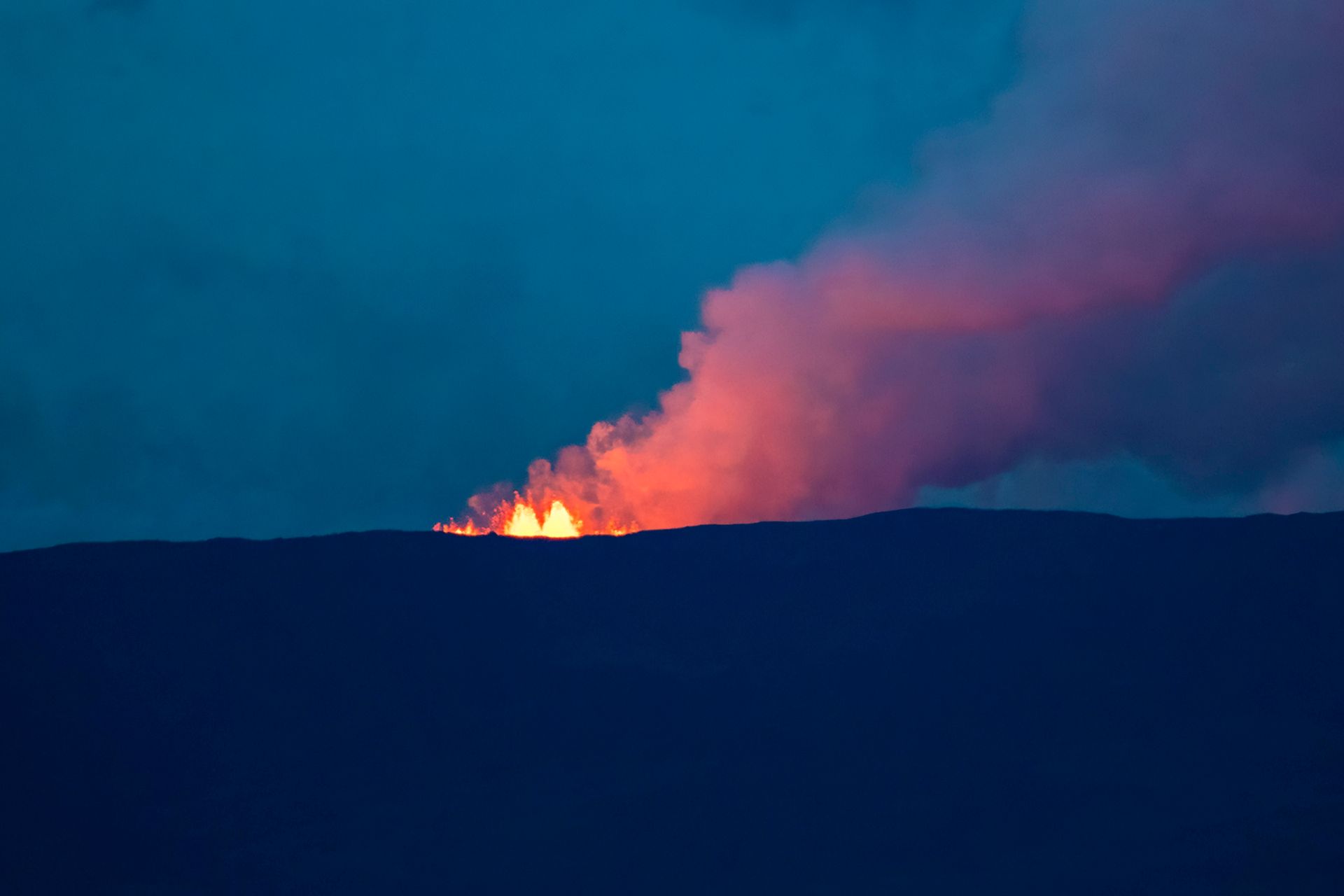
"Mauna Loa, the world’s largest volcano, located on the south-central part of the island of Hawaii, Hawaii state, U.S., and a part of Hawaii Volcanoes National Park. One of the largest single mountain masses in the world, Mauna Loa (meaning “Long Mountain” in Hawaiian) rises to 13,677 feet (4,169 metres) above sea level and constitutes half of the island’s area. Its dome is 75 miles (120 km) long and 64 miles (103 km) wide," the Britannica says.
"Moku‘āweoweo, its summit caldera, has an area of nearly 6 square miles (15 square km) and a depth of 600 feet (180 metres). Frequently snowcapped in winter, Mauna Loa is a shield volcano that has erupted some three dozen times since its first well-documented eruption in 1843. Many of its eruptions are confined within Moku‘āweoweo Caldera; others are lower flank eruptions along northeast or southwest fissure zones.
"During eruptions in 1935 and 1942, U.S. military planes dropped bombs in attempts (that were partially successful) to divert the path of lava flows that threatened the city of Hilo. In June 1950 a 23-day flow from a 13-mile (21-km) fissure in the southwest rift destroyed a small village. Substantial eruptions at the summit occurred in 1975, 1984, and 2022."

"Mauna Loa Observatory (MLO) is located on the north flank of Mauna Loa Volcano, on the Big Island of Hawaii, at an elevation of 3397 meters, or 11,135 feet above sea level. The observatory is a premier atmospheric research facility that has been continuously monitoring and collecting data related to atmospheric change since the 1950's," the NOAA Earth System Research Laboratories says.
"The observatory protrudes through the strong marine temperature inversion layer present in the region, which separates the more polluted lower portions of the atmosphere from the much cleaner free troposphere. The undisturbed air, remote location, and minimal influences of vegetation and human activity at MLO are ideal for monitoring constituents in the atmosphere that can cause climate change.
"MLO has supported hundreds of cooperative research programs with national and international universities and government organizations. A staff of 8 operates and maintains the observatory, with offices in Hilo, Hawaii."
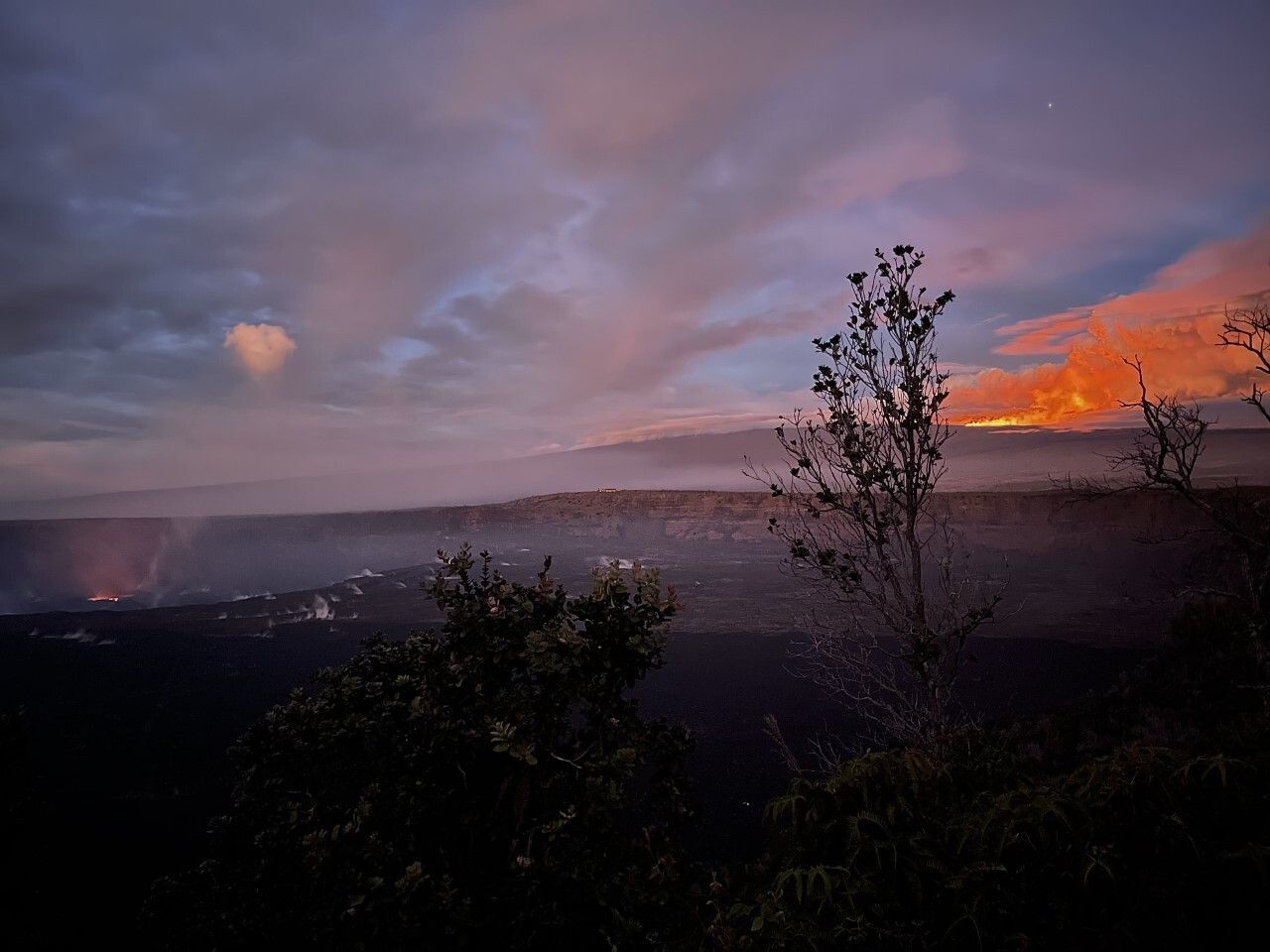
"Like its Hawaiian cousins, Mauna Loa owes its existence to a superheated plume of matter rising from the depths of Earth’s mantle to the base of the Pacific tectonic plate. As that plume reaches the plate, it decompresses and the material begins to melt, creating vast reservoirs of magma. And as the Pacific plate has shifted over time, a chain of volcanoes fueled by this subterranean blowtorch has risen in its wake," the
National Geographic says
"Ascending 10.5 miles from its seafloor base and covering 2,000 square miles, Mauna Loa, which means “Long Mountain” in Hawaiian, is particularly colossal. It is also hyperactive. Eruptions have been observed for centuries ever since the Hawaiian archipelago was settled by seafaring Polynesians. Since 1843, when detailed written records began, there have been 33 documented eruptions.
"The magma’s chemistry has been mostly consistent since that time, resulting in runny, extremely hot lava flows (up to 1,800 degrees Fahrenheit) and a dearth of any especially explosive activity. In the distant past, eruptive activity was concentrated either at Mauna Loa’s summit or on its slopes. But the most recent 33 all began at the summit, and half of those stayed safely confined to the Moku‘āweoweo caldera."

"The world’s largest active volcano—Hawaii’s Mauna Loa—has been quiet for the past four decades. But in November 2022, the volcano began to stir," the
NASA Earth Observatory says.
"The first signs of unrest emerged in early October 2022, when U.S. Geological Survey data showed a tenfold increase in small earthquakes beneath the volcano’s summit caldera—a result of the underground movement of magma. Swarms of earthquakes continued sporadically through November 27, 2022, when new fissures began to spill lava across the caldera floor at 11:30 p.m. local time. Most of the lava fountains were only a few yards tall, though some of the tallest rose as high as 100–200 feet (30–60 meters). The lava flows in the caldera had quieted by the next day, although other fissures had opened slightly to the northeast by then.
"The bright glow of the eruption was visible to NASA and NOAA satellites orbiting hundreds of miles above the surface. The image above was acquired at 2:25 a.m. local time (12:25 UTC) on November 28 by the “day-night band” of the Visible Infrared Imaging Radiometer Suite (VIIRS) on the NOAA-NASA Suomi NPP satellite. For comparison, the image above shows the same area on October 29, 2022, before the eruption had begun."
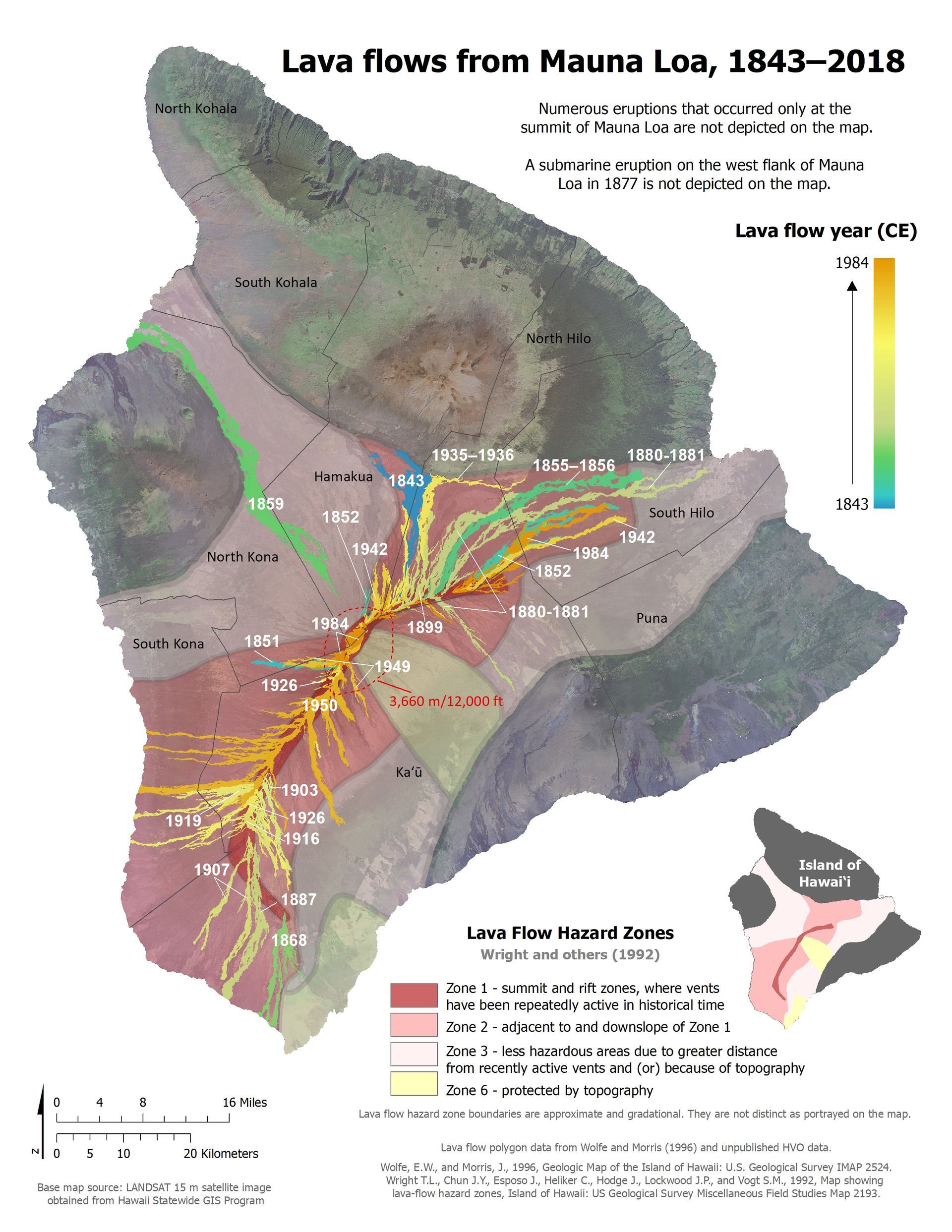
"The world's largest subaerial (above water) volcano, Mauna Loa (Long Mountain) is so massive that you feel its presence more than see it. Even when it doesn't have its head in the clouds, it's impossible to pick out its summit (13,678ft) – the curse of a shield volcano which builds slowly from lava oozing down its flanks. Its bulk makes up half the Island of Hawaiʻi, stretching over 60 miles long and covering an area of 2035 sq miles," the
Lonely Planet says.
"Mauna Loa is so heavy that it has actually compressed the earth's crust underneath it, essentially sitting in the bottom of a 26,000ft (5-mile) deep bowl in the ocean floor. This means that from its true base to the summit, the volcano is 56,000ft (10.6 miles) tall.
"Unlike most volcanoes, Mauna Loa does not sit on the intersection of two tectonic plates, but rather gets its eruptive inclinations from a stationary 'hot spot' below the crust: a mass of magma pushing upwards as the plate moves over it. Since 1843 (when we really started keeping track of these things) Mauna Loa has erupted 33 times, usually starting with activity at the summit caldera before letting off pressure at its flanks along the rift zones. Its 1868 eruption caused the largest earthquake recorded in Hawaii."

"Mauna Loa is one of five volcanoes that together make up the Big Island of Hawaii, which is the southernmost island in the Hawaiian archipelago. It’s not the tallest (that title goes to Mauna Kea) but it’s the largest and makes up about half of the island’s land mass," the
PBS says.
"It sits immediately north of Kilauea volcano, which is well-known for a 2018 eruption that destroyed 700 homes and sent rivers of lava spreading across farms and into the ocean. Mauna Loa last erupted 38 years ago. The current eruption is its 34th since written history began in 1843.
"The Big Island is mostly rural and hosts cattle ranches and coffee farms but it is also home to a few small cities, including the county seat of Hilo, which has a population of 45,000. It’s about 200 miles (320 kilometers) south of Hawaii’s most populous island, Oahu, where the state capital, Honolulu, and beach resort Waikiki are both located. Mauna Loa’s volume is estimated to be at least 18,000 square miles (75,000 square kilometers), making it the world’s largest volcano when measured from the ocean floor to its summit."
Photos: World's Largest Active Volcano, world record in Hawaii. Photos: Hawaii Volcanoes National Park
Related world records:
World's Tallest Tsunami, world record in Lituya Bay, Alaska
World's Largest Piedmont Glacier, world record in Alaska
World Largest Snowflake, world record at Fort Keogh, Montana
Largest known sub-aerial landslide on Earth, world record in Wyoming
World's Largest Bentonite Deposits, world record in Wyoming
World’s Largest Rhythmic Spring, world record near Afton, Wyoming
World's Largest Mineral Hot Springs, world record in Thermopolis, Wyoming
World's Highest Hill: world record near Poteau, Oklahoma
World’s largest artificial reef: world record off Grand Isle, Louisiana
World's Longest Cave System: world record in Edmonson County, Kentucky
World’s Largest Cannonball Concretions: world record in Rock City, Kansas


